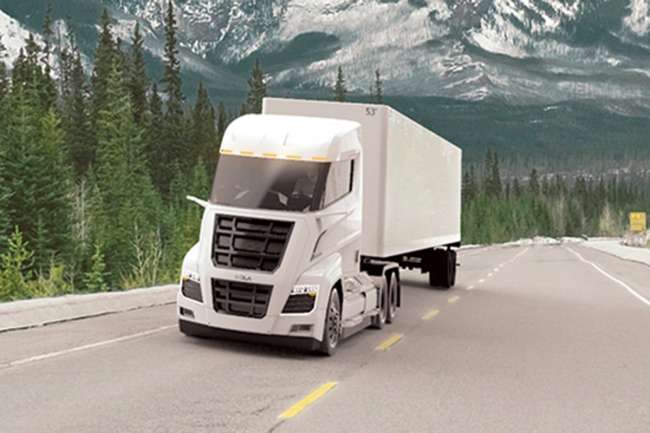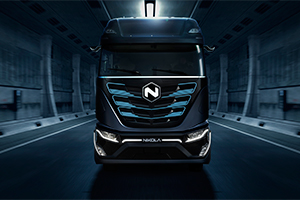Senior Reporter
Nikola Two Truck Will Run 900 Miles on Tank of Hydrogen, Company Says

[Stay on top of transportation news: Get TTNews in your inbox.]
Nikola Corp. announced updates on its zero-emission hydrogen fuel-cell electric commercial truck program as the company vied for attention beside other truck makers in an increasingly crowded space it helped create in 2016 with its introductory announcement.
The updates include its longhaul Nikola Two fuel-cell electric vehicle (FCEV), now with a range of up to 900 miles.
The Nikola Two FCEV sleeper model is expected to be ready to launch in late 2024. It will be based on a new chassis custom-designed for North American routes, according to the Phoenix-based truck maker.
The newly announced range of 900 miles expands on earlier plans for a long-distance truck with a range of up to 745 miles that Nikola staked out in 2018.
“To expedite the transition to a carbon-free future, the trucking industry needs heavy-duty, zero-emission commercial vehicles engineered to match the weight and range capabilities of today’s diesel trucks,” said Nikola’s Jason Roycht, global head of FCEV. “Nikola is excited to introduce additional detail about our portfolio of FCEV trucks and our continued commitment to sustainable commercial transportation.”
Nikola’s plan comes on the heels of Navistar Inc.’s announcement in January it intends to produce a zero-emission longhaul truck using fuel-cell systems supplied by General Motors and will have an International RH Series FCEV model commercially available in 2024.
J.B. Hunt Transport Inc., a longtime Navistar customer, will deploy some of the trucks in a pilot program beginning next year.
In 2020, Hyliion Corp. announced it would have a longhaul, fully electric powertrain, the Hypertruck Electric Range Extender (ERX).
Fleet demonstration vehicles with the ERX will ship in 2021, with volume production scheduled in 2022, the Austin, Texas-based company, founded in 2015, reported in June. The ERX, whose batteries are charged by an undersized natural gas engine, is designed for a range of 1,000 miles in between refueling with natural gas at a network of about 700 existing public stations.
Meanwhile, Nikola’s production of the prototypes of its regional Tre FCEV for distances up to 500 miles is scheduled to begin in Arizona and Ulm, Germany in the second quarter. Testing and validation of these vehicles will continue into 2022, and production is planned for the second half of 2023.
The Tre FCEV leverages the Tre battery-electric vehicle platform with hydrogen fuel-cell power, while being designed to improve aerodynamics and reduce total vehicle weight.
Nikola’s Tre BEV cabover is intended for trips up to 300 miles, and production is set to start for North America in the fourth quarter. The Nikola Tre and Nikola Two FCEVs are expected to use multiple common fuel-cell power modules and scalable hydrogen storage systems.
Both systems are currently in development and testing with industry leaders in collaboration with Nikola engineering, the company reported. The first Tre prototypes utilizing these systems are expected to begin road tests in 2022.
“Our plan is to enter the market in steps,” Roycht said. “We are building on the current Tre platform with the planned launch of our fuel-cell and hydrogen storage systems in 2023. These systems are designed to be scalable in order to handle the greater power and longer-range requirements for longhaul, which allows for concurrent integration into the chassis design of the Nikola Two FCEV Sleeper.
“Utilizing common components and systems for hydrogen propulsion will support greater economies of scale and also allow Nikola to continuously expand and adapt our FCEV truck portfolio to address the diverse requirements of commercial trucking.”
Want more news? Listen to today's daily briefing below or go here for more info:





